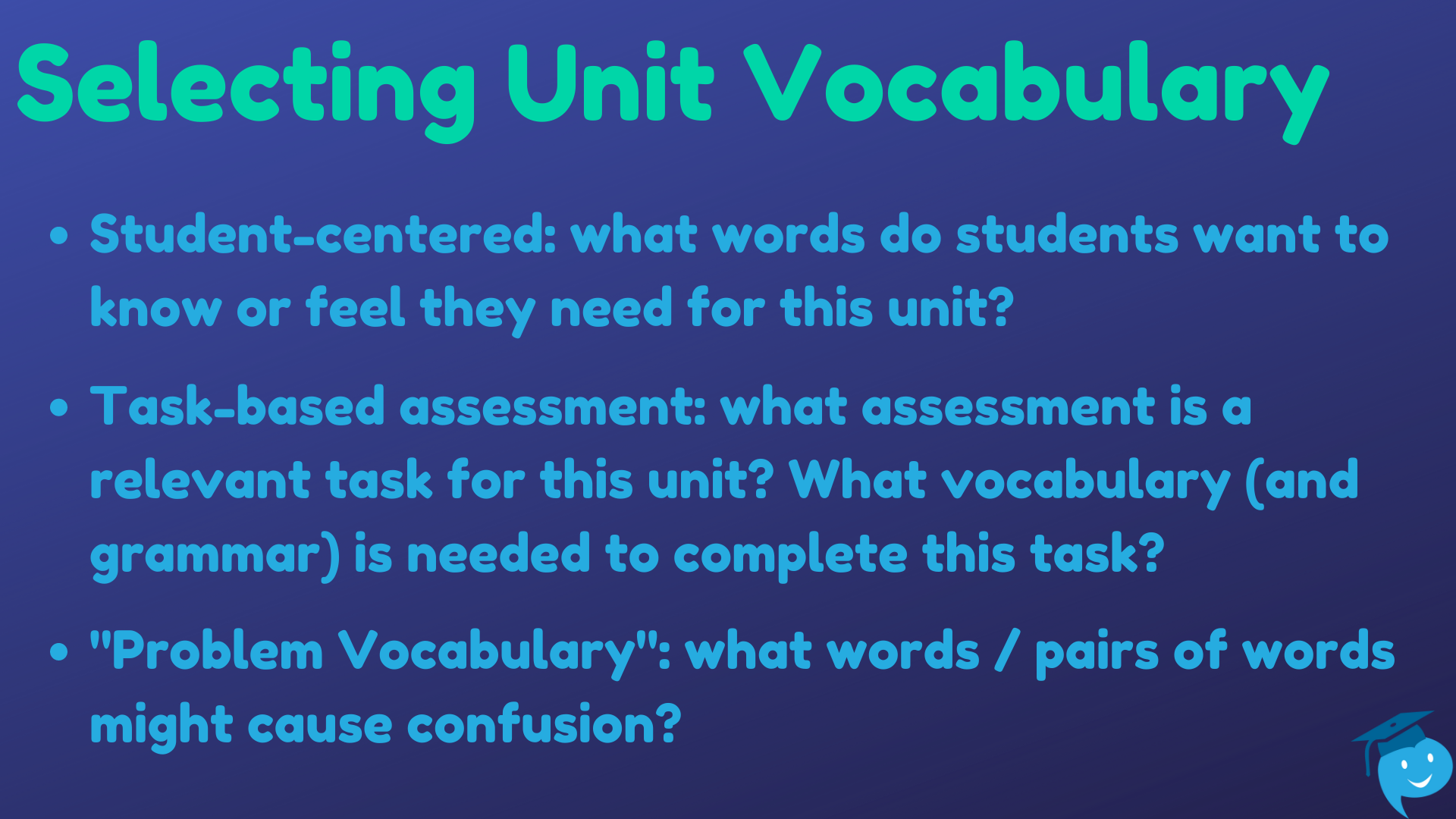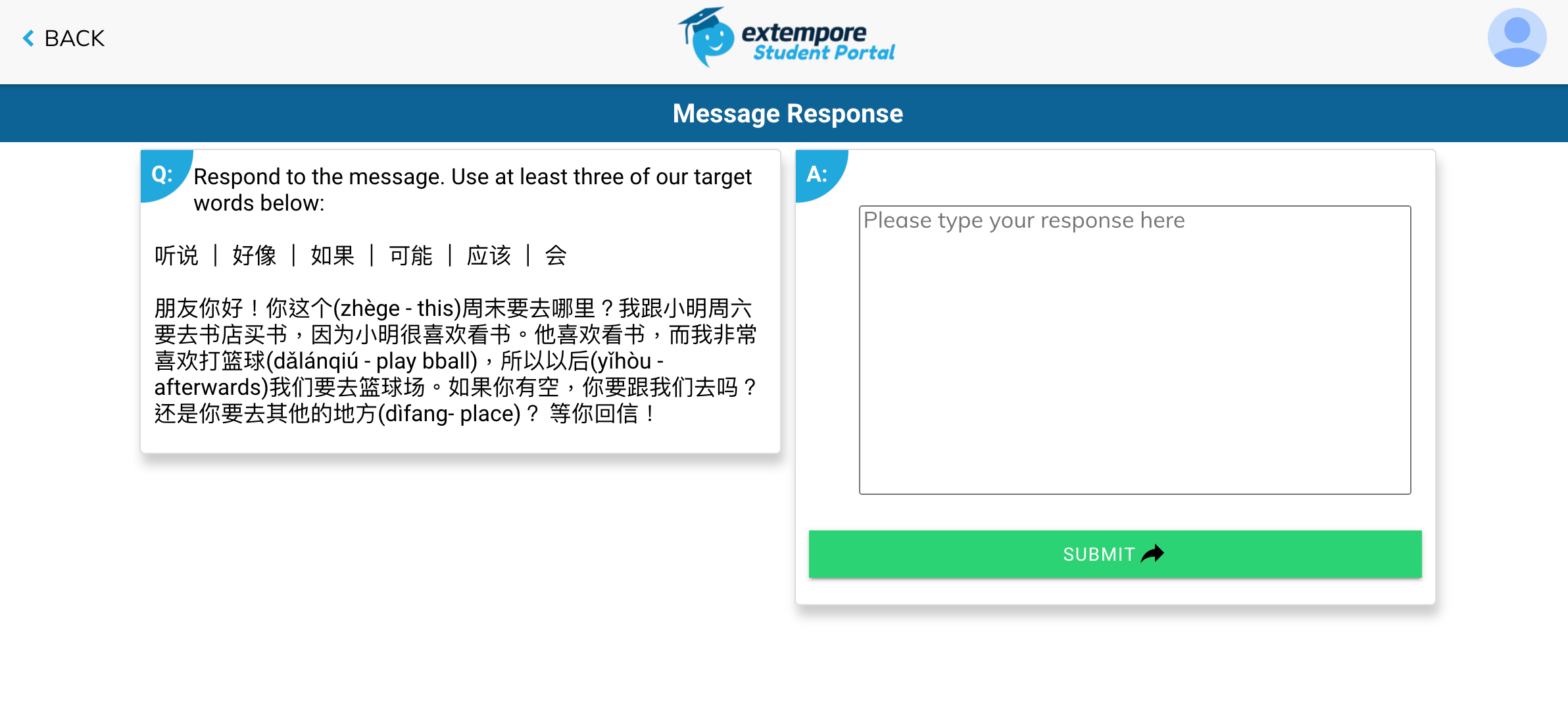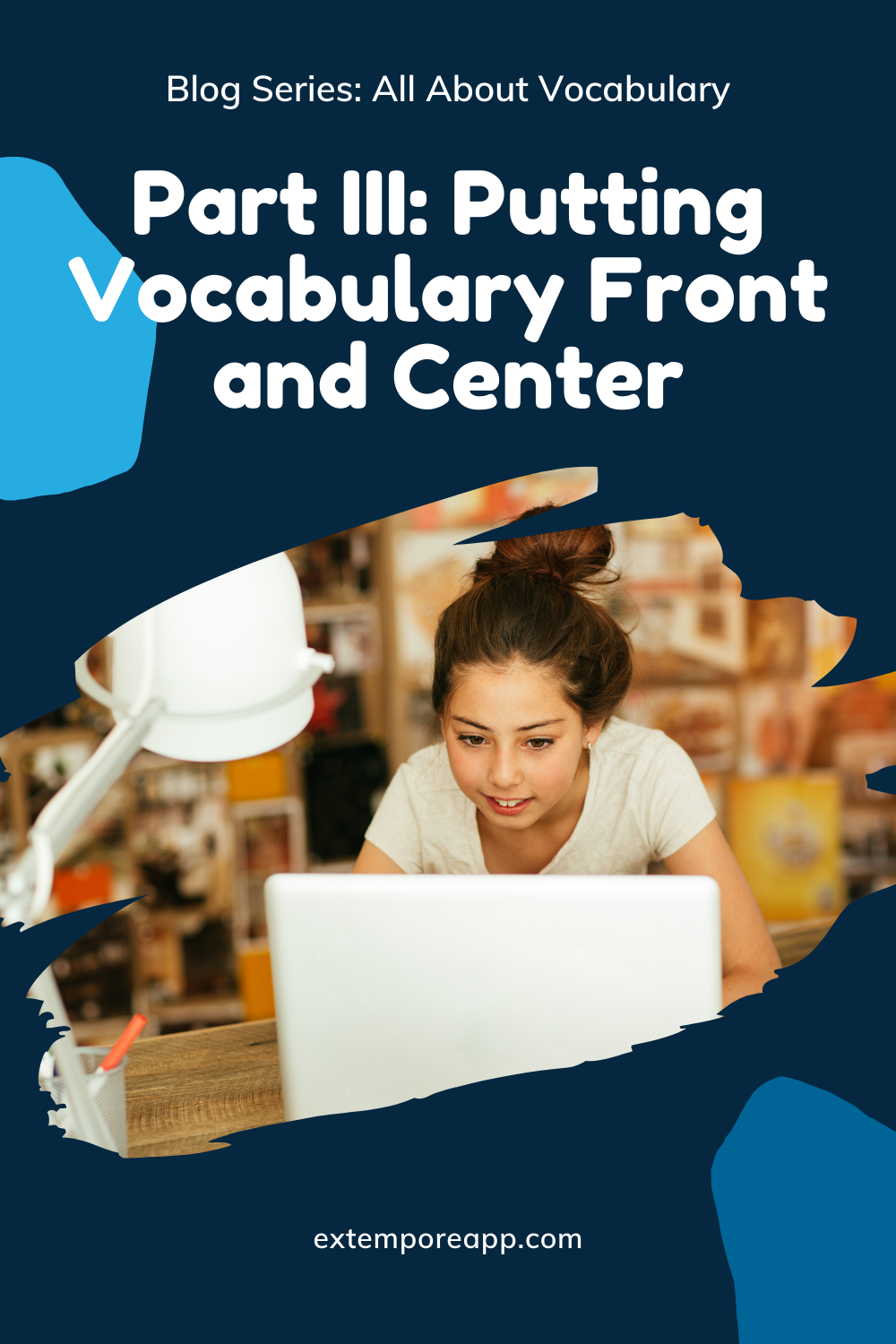
Whoah, it's 2022? Happy New Year! We’ve arrived at what’s now the third installment of our blog series on vocabulary. So far I’ve written about my own thoughts and experiences teaching vocabulary and a bit on what some research says about vocabulary development and acquisition.
Before getting into the application of this research into our teaching, I want to look at more research centered on vocabulary and its many roles in the language classroom. When I first started writing this, I had picked out three articles to review and discuss, but after building and building upon one article focusing on explicit vocabulary instruction, this post will be more of an article review, culminating with a discussion on applying these topics on Extempore. The article in question is...
Young-Davy, B. (2014). Explicit Vocabulary Instruction. ORTESOL Journal, 31 (26-32).
You can read this article in full here.
Blog Breakdown!
In the video below, I break down this blog with relevant applications of practicing explicit vocabulary on Extempore.
Explicit Vocabulary Instruction: What does it mean and what does it look like?
Alright, let’s dive into this! Young-Davy (2014) has much to say on explicit vocabulary instruction, but we should start with what exactly this means and why we should care about it.
"Much recent research into vocabulary acquisition and studies of learning strategies strongly indicates that the explicit vocabulary learning vs. implicit vocabulary learning issue is not a dichotomy, but rather a continuum… on which some vocabulary learners tend toward implicit learning while others tend toward the explicit learning end" (Young-Davy, 2014).
Let’s clarify these two styles of teaching. Explicit vocabulary teaching means that vocabulary is front and center: words take center stage in the lesson, and everything done in the lesson is designed to help students acquire and retain these words. Implicit vocabulary teaching, on the other hand, makes vocabulary learning a secondary feature of the teaching style; perhaps the lesson focuses on a story or content topic in the target language.
If you’ve been teaching language for some time now, you’ve likely seen the benefits of both teaching styles and equally so the preferences of students towards one or another. Still, as we can see from the above quote, we should seek a balance and experiment to find what style provides the best outcomes that still place interpreting and creating meaning as the centerpiece of learning.
Benefits of Explicit Vocabulary Instruction
What are the benefits of explicit instruction then? For one, it’s critical for developing student confidence, particularly when looking at writing skills. “Improved vocabulary use leads to a feeling of success; in contrast, a lack of vocabulary impairs learners at all levels of academic endeavors and undermines even the most diligent learners” (Young-Davy, 2014).
For Young-Davy (2014), part of explicit instruction involves “both conscious attention and sufficient exposure” on behalf of students. For teachers, achieving this means focusing on three questions:
How do we teach vocabulary? (implicit vs explicit)
How much vocabulary do we teach?
What vocabulary do we teach?
In a conversation about explicit teaching, we have already answered the first question. The next two questions are a bit more challenging.
Choosing Vocabulary With Your Students
For many language teachers, textbooks supply a given unit’s target vocabulary list. The problem with such lists, however, remains that these lists of often 30 or more words only encourage learning through memorization, as opposed to learning words in chunks.
Instead of a set list, why not have your students pick the words to learn? On top of increasing motivation, student-generated lists have words students “believe they need or that they want to learn” (Young-Davy, 2014). Relatedly, these words can be determined by looking at the end assessments / final projects set for the students. Here are a few examples.
For a unit on hobbies, it’s impossible to create one list that will meet every student’s needs. Have students instead share their hobbies and interests first (perhaps through a digital survey), then supply students with the words that they want to learn.
For a unit on food, have students share foods they eat at home / in their home cultures.
For a unit on social media, have students share their most commonly used apps / methods of communication.

Think about these three questions when choosing potential unit vocabulary. What input can your students provide that will better help them connect with what they are learning?
As mentioned, it also helps to take a backwards design approach to determining vocabulary. For instance, the third example unit listed, social media, could have the final task assessment involve students writing an article in the target language about the most valuable social media application for students when living in America. Some might argue Snapchat, others might say Twitter, others might say TikTok. Regardless of their choice, we can look at the final task (an argumentative essay) as our guide for determining words. Ask students the question, “What words / language would you need to complete this task?” and they might come up with words / phrases like…
I think / I believe...
You should use _______ because
_________ is not worth using because…
It’s true that….
Some apps like ______ are popular…
If students come up with the language they need to complete this task, then this is the language we should be focusing on when we teach this unit. Students learn these bits at a time, we assess over time, and eventually the final assessment tasks them with putting it all together. If they can form a cohesive essay (or complete whatever task you choose) about social media apps and use this language to do it, congratulations to them and you! You’ve taught and they’ve learned. (Now, how long this takes is another story entirely…)
If students come up with something like the above list for what they need to complete this task, then this is the language we should be focusing on when we teach this unit.
You’ll notice something about the above examples: sets of words like this are all easily categorizable. I mention how categorizing / sorting vocabulary is one of the easiest ways to achieve differentiated practice in the first post in this series, and it's always something to consider when choosing which words to teach.
Problem Vocabulary
Young-Davy (2014) shares one more idea that I find worth noting: “problem vocabulary.” These include “high frequency words or phrases students are very familiar with but which they cannot use accurately on a consistent basis.” I really like this. There will always be words and phrases in the TL that students (and ourselves) mix up (she gives the examples of say/tell, explain/discuss, state/express), and it’s paramount that, as language teachers, we are aware of this. Sure, we can hope that students will “get the differences” by supplying copious amounts of input, but there’s also no harm in looking at them under a comparative lens, showing example sentences, and discussing when and how to use them. When we do this, we enhance student proficiency and awareness, and isn’t that the end goal?
(NB: Young Davy (2014) also writes a bit on defining words and helping students understand word meanings, but for the sake of relevance and length, I will omit discussion on this portion.)
Vocabulary Exposure, Tasks, and Extempore
When it comes to acquiring vocabulary, there are two notions consistently present: repetition and exposure. Young Davy (2014) cites numerous sources that state different statistics about how many exact instances of exposure a learner needs, but the point remains that, no matter what that number is, repetition and high exposure are integral parts of the language learning process. For Young-Davy (2014),
"explicit exposure...is, in fact, a series of tasks that are recycled over the course of the term incorporating multiple exposure, a clear and consistent organization format and use of student input."
Recycle: perhaps a better word for repetition.
Sample tasks / activities on Extempore
Looking for ways to put vocabulary front and center with Extempore? Below are a few examples.
Picture Response
For infinite possibilities of responses and questions, create a picture like the one on the left below (easily done in Google Slides or Canva). Then, get talking!
- Pose open-ended and/or true-false questions about the image.
- Post statements about the images, have students read them out loud, then have students choose if they are true or false.
- Have students say as much as they can about the image in a given time.
- Have students ask relevant questions about the image.
- Provide target vocabulary / 'problem vocabulary' and have students make sentences / story using 3-4 focus words.
- Pose multiple choice questions about the images.

Message Response
Have your students respond to a message from a friend and include target vocabulary for their response. This is great for a timed assessment.

Wrapping Up and a Webinar!
Explicit vocabulary instruction is one of many strategies that you can apply to and modify for your teaching. Of course, as Young-Davy (2014) notes, it's important to remember the other factors that influence linguistic proficiency and awareness:
Focused vocabulary instruction is not a magic bullet. It does not negate the role of incidental learning, nor is it a quick fix to the problems limited vocabulary and poor acquisition skills present for L2 learners.
With a grounded approach, students and teachers can achieve significant progress with such a focus on vocabulary. How might you use this method in your classroom?
If you’re interested in more about vocabulary and its usage in the language classroom, be sure to attend our webinar cohosted by Extempore and Joe Barcroft (University of Washington, St. Louis). It will take place on Thursday, January 27th at 4:00 p.m. CST. Sign up here.



